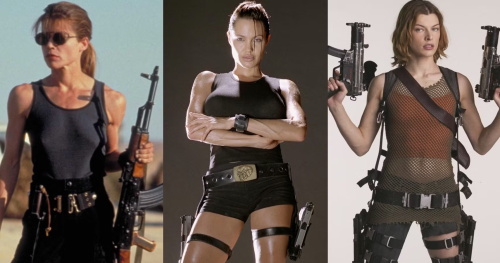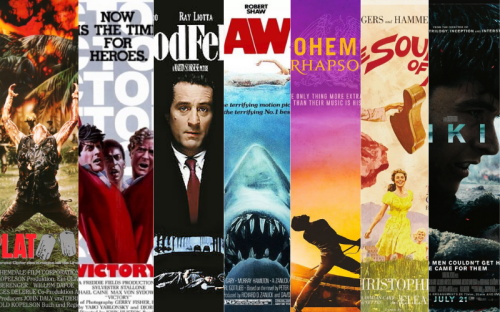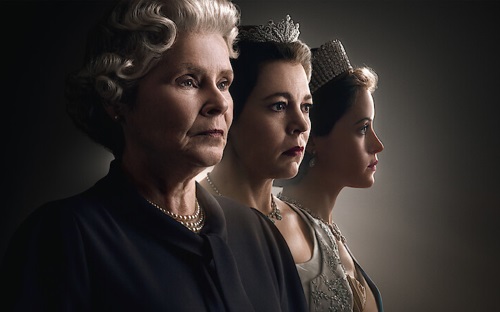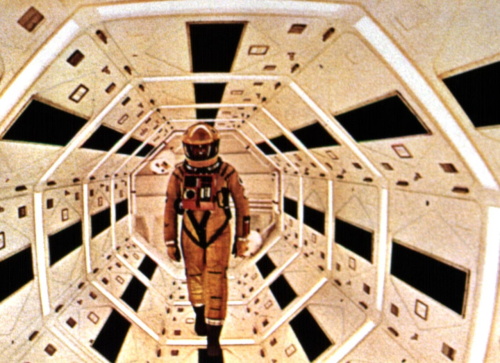
Over the past several decades, female representation in television and movies has undergone significant transformations. From the early days of Hollywood to the modern era, the portrayal of women has evolved in tandem with shifts in societal norms, gender dynamics, and cultural expectations. This journey reflects broader changes in the way women are viewed both in media and in the world at large. Today, the demand for more complex, diverse, and authentic female characters is stronger than ever. But how did we get here, and what has influenced this evolution?
Early Hollywood: Stereotypes and Simplified Roles
In the early years of cinema, women were often relegated to stereotypical roles that reinforced traditional gender norms. From the 1920s to the 1950s, most female characters in film were either love interests, damsels in distress, or mothers. These women were largely defined by their relationships with men, and their stories often revolved around romance or domestic life.
The advent of "the star system" in Hollywood further contributed to these restrictive roles. Female actresses were expected to embody a specific, idealized femininity—charming, beautiful, and often subservient to the male lead. The 1930s and 1940s saw the rise of actresses like Marilyn Monroe and Rita Hayworth, whose beauty and charisma were central to their appeal, but whose characters rarely deviated from conventional roles.
Television during this era largely mirrored the trends seen in film. Shows like ‘I Love Lucy’ (1951–1957) and ‘The Mary Tyler Moore Show’ (1970–1977) showcased women in comedic or domestic settings. The portrayal of women as housewives, mothers, and caretakers became entrenched, further reinforcing the idea that women’s primary value lay in their roles within the family.
The 1960s to 1980s: The Rise of the Feminist Movement
The 1960s and 1970s marked a turning point in both real-world gender politics and the entertainment industry. With the rise of second-wave feminism, women began to demand more complex and varied representations in the media. The feminist movement fought for equal rights, reproductive freedom, and sexual liberation—issues that were, for the first time, addressed in mainstream media.
Television and film began to reflect these changes. In the 1970s, characters like ‘The Bionic Woman’ (1976–1978) and ‘Wonder Woman’ (1975–1979) became iconic symbols of female empowerment. These women were not defined by their relationships to men but instead had their own agency and superhuman abilities, though they were still often framed within traditional gender roles.
The 1980s saw the emergence of action heroines such as Ellen Ripley in ‘Alien’ (1979) and Sarah Connor in ‘The Terminator’ (1984). These characters were tough, resourceful, and capable of taking care of themselves in dangerous situations. While still considered unusual for women at the time, these characters signaled a shift toward more diverse, multifaceted portrayals of women in film.
In television, shows like ‘The Golden Girls’ (1985–1992) and ‘Cagney & Lacey’ (1982–1988) featured women in non-traditional roles, whether as wise and independent older women or as detectives solving crimes. These shows helped to break down the idea that women had to conform to a narrow set of expectations.
The 1990s to Early 2000s: More Diversity and Complexity
The 1990s and early 2000s were a period of increased experimentation in television and film, with a greater emphasis on creating more diverse and well-rounded female characters. With the popularity of TV dramas like ‘Buffy the Vampire Slayer’ (1997–2003) and ‘Xena: Warrior Princess’ (1995–2001), women were seen in roles that combined strength, intelligence, and vulnerability.
‘Buffy the Vampire Slayer’, in particular, introduced the idea that women could be both physically strong and emotionally complex. Buffy Summers was not just a typical teenage girl—she was a superhero who faced supernatural threats while balancing the everyday struggles of high school, relationships, and family. This character challenged the archetype of the passive female and was a major cultural shift for the portrayal of women in media.
Film also saw more varied portrayals of women, from the feminist-driven dramas like ‘Thelma & Louise’ (1991) to the rise of women in traditionally male-dominated genres. Characters like ‘Lara Croft’ in ‘Tomb Raider’ (2001) and ‘Mia Wallace’ in ‘Pulp Fiction’ (1994) embodied both femininity and fierce independence.
The 1990s and 2000s also introduced the increasing importance of female characters in ensemble casts, where women were not merely sidekicks but vital players in the narrative. Films like ‘The Avengers’ (2012) and ‘Ocean's 8’ (2018) showcased women in leading roles within traditionally male-dominated genres, demonstrating their ability to hold their own and challenge the status quo.
The 2010s to Present: Intersectionality and Representation
The 2010s marked a dramatic shift toward the demand for greater diversity and intersectionality in female representation. Audiences began to demand not just more women on screen but women of all races, sexual orientations, abilities, and backgrounds. Female characters were expected to be more reflective of the real world, with all its complexities and nuances.
Television shows like ‘Orange is the New Black’ (2013–2019) and ‘Pose’ (2018–2021) featured women of color, LGBTQ+ women, and trans women in central roles, challenging stereotypes and offering more nuanced portrayals. These shows demonstrated that women’s experiences could not be universally defined by one single narrative.
In film, the 2010s brought about a renaissance for female-driven narratives. Movies like ‘Mad Max: Fury Road’ (2015), featuring Charlize Theron as the formidable Imperator Furiosa, and ‘Wonder Woman’ (2017), starring Gal Gadot, signaled a shift toward female superheroes who were not defined by their relationships with men but by their own agency and story arcs.
The #MeToo movement also played a significant role in the evolution of female representation, shedding light on the industry's pervasive gender inequality and sexual harassment. The movement encouraged a broader conversation about how women were treated on and off screen, leading to more opportunities for women in creative roles, including directing, writing, and producing.
Moving Forward: Representation and Beyond
As we move forward, the focus on diverse, authentic, and complex female characters is stronger than ever. The future of female representation in TV and movies is one where women of all backgrounds, identities, and experiences will be celebrated. Audiences are no longer content with token representations of women—they want stories that reflect the full spectrum of women's lives, aspirations, and struggles.
The industry must continue to evolve, ensuring that women are not just portrayed as heroes, villains, or romantic interests but as multi-dimensional characters with their own journeys. In doing so, we’ll create a media landscape where everyone can see themselves reflected on screen, and where women’s stories are told with the depth and complexity they deserve.





